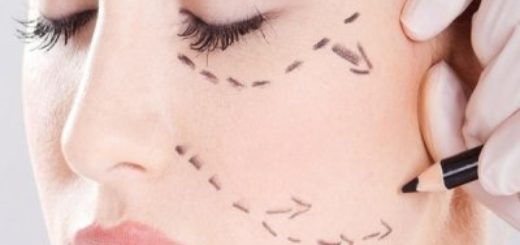Everything you need to know about Laser Resurfacing Surgery
Laser treatment is a method and surgery used to improve the look of the skin. It uses a laser to send out brief pulses of high-energy light. The light then gets absorbed by water and substances in the skin called chromophores which converts it into heat energy. The heat then destroys thin sections of skin, layer by layer. As the wounded area heals, new skin grows to replace the damaged skin that was removed during the laser treatment. Some lasers only tighten the skin by heating it but do not destroy the skin.
The CO2 (Carbon dioxide) and Erbium lasers are the two most common types to laser used for resurfacing.
Majorly, laser resurfacing is very precise and causes little damage to the surrounding skin and tissue. It is done most often on the face, but it may be done on skin in other areas of the body. It’s usually not done on the hands, neck and chest. The skin in these areas does not heal as well as it does in other areas. It tends to thicken and scare as a result of the laser treatment.
Newer methods of laser resurfacing cause fewer problems and have faster recovery times. These methods include:

- Fractional laser skin resurfacing: this treats microscopic columns of skin. The treated areas of the skin are surrounded by untreated areas. The result is visible improvement without much bleeding or scabbing.
- Plasma skin resurfacing: this technique uses plasma energy to destroy the lower layers of skin. It does not affect the top layer of skin. This top layer protects the lower layers of skin as they heal.
- Superficial erbium: YAG laser resurfacing. This is a mild laser treatment method. It works best for minor wrinkles and other skin problems.
- Infrared laser resurfacing: It targets deeper layers of the skin with heat to smooth and tighten the skin.
How it is done
The areas to be treated are cleaned and marked with a pen. A nerve block with a local anesthetic is usually used to numb the area before treatment. You may also get medicine to help you relax. If your whole face is going to be treated, you may need pain relievers, sedation, or stronger anesthesia. You may need to wear goggles to prevent eye damage by the laser. And wet towels will be placed around the area to absorb excess laser pulses.
The laser is passed over the skin, sending out pulses. Each pulse lasts less than a millisecond. Between passes with the laser, the skin will be wiped with water or a saltwater solution. The number of passes needed depends on how large the area is and what type of skin is being treated. Thin skin around the eyes, for instance, needs very few passes with the laser. Thicker skin or skin with more severe lesions will need more passes.
What to Expect After Surgery
The time needed to heal and recover after laser resurfacing depends on how big and deep the treated area is. Someone who has the full face resurfaced, will take longer to recover than someone who has only a small area of skin treated.

The wounded area will be pink, tender, and swollen for at least several days. Cold packs and nonsteroidal anti-inflammatory drugs may help reduce swelling and pain. After the skin grows back, the skin will stay red for several weeks.
Proper care of the treated area while the skin heals is very important.
- Rinse the skin several times a day with cool tap water to avoid infection. This will also help to get rid of the crusting that may form. Avoid soaps and perfumes.
- Change the ointment or dressing on the treated areas to keep the area moist. This will help the skin heal.
- Avoid sun exposure. After the peeling has stopped, use sunscreen every day. New skin is more likely to be damaged by the sun.
Why it is Done
Laser resurfacing may be used to remove or improve the look of:
- Wrinkles
- Superficial scars from acne, surgery, or trauma that are not growing or that are getting thicker.
- Color pigment changes or defects in the skin, such as liver spots, port-wine stain, or spots.
Who Should Undergo Treatment
You may not be a good candidate for laser resurfacing if you:
- Have had skin color changes, scarring, or thickened tissue from earlier treatment.
- Have a skin, blood flow, or immune disorder that could make healing harder.
- Have a history of abnormal scarring.
- Are using isotretinoin or have used it in the last 6 to 12 months. This raises the risk of scarring.
- Have a bacterial or viral infection of the skin.
How well it works
There are many things that can affect the short term and long term results of laser resurfacing. These include your skin type, the health of your skin, how much experience your doctor has, the type of laser used and your lifestyle after the treatment. Some types of skin problems or defects respond better to laser resurfacing than others. People with lighter skin who limit their time in the sun after treatment tend to have better results than those with darker skin and those who keep spending lots of time in the sun.

Risks
Side effects and risks of laser resurfacing may include:
- Swelling, itching, crusting, and soreness. These are expected effects of laser resurfacing. They will go away over time.
- Normally this lasts 6 to 12 weeks, but it may last up to 6 months. Some people may turn red or flush during stress or exertion more easily than they used to.
- Color changes in the skin. In 30 to 40% of people, the treated skin is darker than the surrounding skin. This occurs mainly in people with darker skin. Bleaching or peeling of the skin can help lighten the skin for a more uniform skin tone. And the darker skin may fade on its own over time.
- Skin irritation, including acne flare-ups in people who are prone to acne.
- Bacterial, viral, or fungal infection of the skin. Infection may affect the rest of the body also.
- Scarring may be improved with medicine.
- A condition in which the edge of the eyelid rolls outward and exposes the inside of the eyelid. It is a rare but serious complication of laser treatment in the eye area. Surgery is sometimes need to correct it.
Dr. Ashok Pandey from Bombay Cosmetic Clinic is a celebrated and revered personality in the field of cosmetic surgery. Currently conducting his cosmetic and aesthetic surgery practice in Navi Mumbai, he is associated with number of leading hospitals across the city where he regularly imparts his services to the needy.
Such is his expertise in his field of knowledge that he has successfully conducted more than thousand cosmetic practicing in South Mumbai and Navi Mumbai and plastic surgeries in his career so far.
For consultation call – 099307 31109 / 022 27801101


